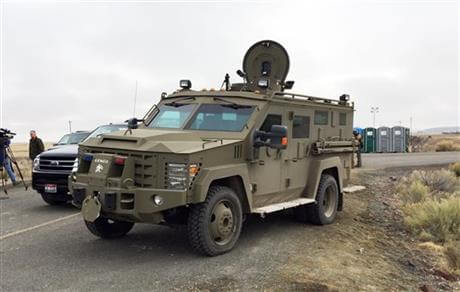
By REBECCA BOONE
As the FBI focuses on its criminal investigation at the national wildlife refuge taken over by an armed group, land managers must get ready to reopen the 300 square-mile area, which draws birdwatchers, anglers and hunters and is a key economic engine of the surrounding area.
Meanwhile, snow is melting and filling the untended irrigation canals at the refuge. Tourist groups are beginning to plan summer trips. Local business owners are wondering what their normally busy summer season will look like. Residents are wondering if the deep divisions in the community created by the 41-day standoff will leave lasting scars.
In other words, the clock is still ticking for a community eager to resume normal life.
“People need to heal,” said Linda Gainer, owner of The Narrows restaurant and RV park. The business is just a few miles from the Malheur National Wildlife Refuge and counts on the dollars spent by birdwatchers and other tourists. “I didn’t have any people say, ‘I’ll never be your friend again.’ But we did have crappy emails. I’m hoping the birders come back.”
Sponsored Links
Quit! Start One Of These 10 Easy Businesses
LegalZoom
Brightest Flashlight In The World Is Finally Here
Shadowhawk X800 Flashlight
One National Audubon Society group from Portland has already contacted the business to make a dinner reservation for their annual trip, which left Gainer feeling relieved. “That was one of the best emails I think I’ve ever had,” she said.
A group of armed protesters angry about federal land-use policy seized the southeastern Oregon property on Jan. 2, demanding the U.S. turn over public lands to locals and exposing simmering anger over the government’s control of vast expanses of Western range. Several people have been arrested during the standoff, and one protester was shot during a confrontation with police several miles from the refuge.
The last four holdouts at the refuge surrendered Feb. 11.
Larry Karl, the assistant special agent in charge for the FBI in Portland, said it will take several weeks for officials to collect evidence and clear the crime scene. Then the U.S. Fish and Wildlife Service will be tasked with cleaning up the site, including garbage or debris left by the people who occupied the refuge during the standoff. Because dirt was moved — potentially damaging prehistoric archaeological sites — and thousands of artifacts are stored at the refuge, archaeologists and members of the Burns Paiute Tribe will have to spend time making sure nothing is missing or damaged and repairing any problems.
Eventually, land managers will be allowed to catch up on all the maintenance and ecological work normally performed during the winter months.
“There are some water-control issues that are pretty imminent,” said Jason Holms, spokesman for the U.S. Fish and Wildlife Service. “The refuge is artificially irrigated by runoff from the Steens Mountains, and they had a greater than average snowpack this year. There’s 200 miles of irrigation canals within the refuge, and a series of dams and water-control measures.”
Workers normally spend January and February checking the canals and dams and repairing any damage that occurred during the previous months. If that work isn’t completed in time, parts of the refuge could flood — potentially damaging prehistoric sites — and wetlands could be left without needed moisture, hurting the bird populations that live there, Holms said.
But more urgently, the 17 U.S. Fish and Wildlife workers who work at the refuge headquarters have spent much of the last 41 days far from their homes. They were relocated along with their families during the standoff because of safety concerns.
“They’re not just missing work, which is important to them, but they’re basketball coaches and church members. Their children have missed school as well,” Holms said. “We’ve worked really closely with the local school district and the superintendents to make sure that the students’ progress is impacted as little as possible.”
The homecoming could be difficult for some, he said, simply because of all the stress the families endured during the standoff.
“They don’t necessarily know what they’re going back to both on the refuge and off the refuge,” he said. “We’re keeping close tabs on them emotionally.”
President Theodore Roosevelt created the Malheur National Wildlife Refuge in 1908. Administered by the U.S. Fish and Wildlife Service, the 300-square-mile refuge is partly a marshland that’s a key rest area in the Oregon high desert for migrating birds. The number of migrating shorebirds qualifies the refuge as a Regional Western Hemispheric Shorebird Reserve, the wildlife service says.
It also supports more than 20 percent of the state’s breeding population of greater sandhill cranes, as well as many other species. Birding is a popular pastime at the refuge, which also draws anglers, hunters and watchers of wildlife.



